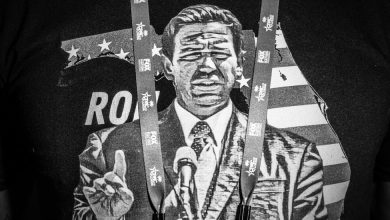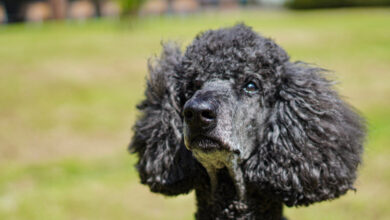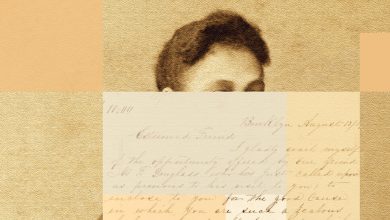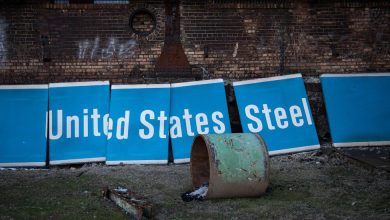Lab Leak Fight Casts Chill Over Virology Research
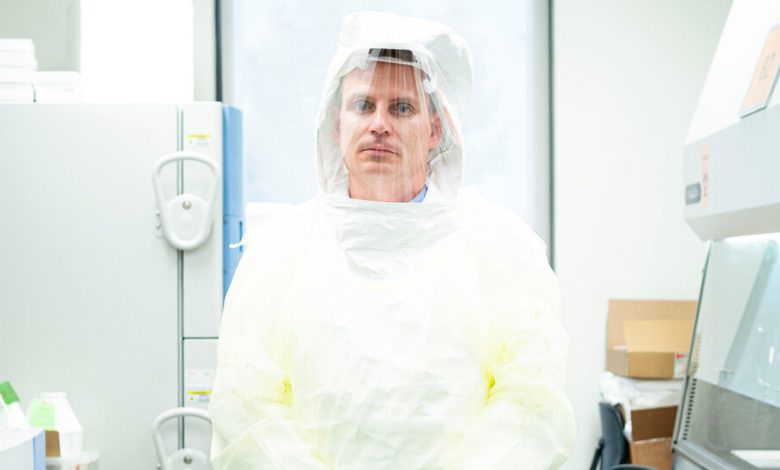
Questions about whether Covid leaked from a Chinese laboratory have cast a chill over American virus research, drying up funding for scientists who collect or alter dangerous pathogens and intensifying a debate over those practices.
The pullback has transformed one of the most highly charged fields of medical science. While some believe such experiments could fend off the next pandemic, others worry that they are more likely to start one.
At Pennsylvania State University, a proposal to infect ferrets with a mutant bird flu virus passed the federal government’s most rigorous biosafety review only to be rebuffed by the National Institutes of Health. Troy Sutton, the scientist behind the studies, said that health officials referred to the public controversy over the lab leak theory in advising him to pursue different experiments.
In Washington, international development officials pulled the plug this summer on a $125 million program to collect animal viruses on several continents after two senior Republican senators demanded that they end the project.
And elsewhere in the United States, nearly two dozen virologists, some of whom spoke anonymously for fear of jeopardizing funding or career prospects, described a professionwide retreat from sensitive experiments. Some said that they had stopped proposing such work because research plans were languishing in long and opaque government reviews. One virologist said that university administrators had asked him to remove his name from a study done with colleagues in China.
Some of the affected experiments constitute gain-of-function research, in which scientists genetically alter a virus to see whether that makes the pathogen deadlier or more contagious.
To proponents of such work, there is no better way to home in on what mutations make a virus dangerous. Those findings, in turn, can help researchers spot the most worrisome of the new pathogens constantly jumping from animals to humans or prepare vaccines to target pandemic-ready viruses.
“The next flu pandemic is brewing in nature, but we have very little means of stopping it, very little means of identifying what the most dangerous viruses are,” said Dr. Sutton, the Penn State virologist. “This freight train is coming, and we need to do anything we can do to get ahead of that.”
But critics say that fiddling with deadly viruses poses intolerable risks for the sake of only hazy public health benefits. Lab mishaps have happened, including in the United States. However small the odds of a lab-generated outbreak, a leak could be catastrophic. If political concerns are intensifying scrutiny of gain-of-function studies, those scientists say, the result is still a much-needed recalibration of the risks and benefits of such work.
“I think there’s lots of good reason to try to remove politics from science, but I can’t complain when what I regard as legitimate political criticism of certain kinds of science affects the judgment of funding agencies,” said Marc Lipsitch, an epidemiologist at Harvard who has long questioned the benefits of disease-enhancing experiments. “Ultimately, they are spending tax dollars.”
In the Covid pandemic, both sides of the debate have found powerful grist.
The possibility that Covid emerged from a lab fueled appeals from biosafety proponents for a clampdown on experiments with even a remote chance of triggering a similar outcome. At the same time, studies suggesting that Covid spilled instead from an illegal animal market reinforced scientists’ fears of the dangerous mutations that viruses pick up in nature — and the need to prepare for them with safer studies in a lab.
The next threat may not be far off: A new bird flu variant known as H5N1 has felled many millions of birds globally, sporadically jumping into their handlers as it spreads.
New Rules
Dr. Sutton was apprenticing in a leading bird flu lab when, in 2011, a firestorm erupted in his field.
Two groups — one in the United States and one in the Netherlands — tweaked the genes of bird flu viruses to make them more transmissible, showing that such viruses could evolve to trigger human pandemics.
To critics, the studies became a byword for reckless experiments that risked kindling horrific outbreaks for only modest scientific knowledge. Lab leaks were responsible for the last cases of smallpox, in 1978, and for infections among scientists in Asia with an earlier coronavirus, SARS-CoV-1, in 2003 and 2004.
But other researchers saw the bird flu studies as critical for mapping the virus’s evolutionary potential. Because of those studies, scientists said, they now know what to look for when sequencing the viruses that are decimating bird colonies. Similar experiments have helped researchers pick viruses to target with prepandemic vaccines.
With those debates flaring, and the discovery in 2014 of forgotten vials of smallpox on the N.I.H. campus, the Obama administration temporarily suspended funding that year for gain-of-function work. Dr. Sutton had just completed bird flu studies at the University of Maryland that underwent layers of special government review and drew criticism from some scientists.
He told his wife it might be time to leave academic research.
But the Trump administration lifted the pause and implemented new oversight rules in 2017 — the same year that Dr. Sutton opened his Penn State lab. Under the new rules, a specialized government committee would review certain gain-of-function proposals, another step in a vetting process that includes lab inspections and university biosafety reviews.
The committee keeps secret its membership as well as details about deliberations. Its oversight is limited to government-funded research. And it has vetted only three projects — partly because some scientists, fearing prolonged reviews, started shelving proposals that could trigger them.
Dr. Sutton, though, was not discouraged. He trained in virology at the same hospital in Vancouver where, when he was 12, his mother died of cancer. He felt that science had fallen short. To protect people’s health, researchers needed to investigate new frontiers of disease.
The third project that the gain-of-function committee reviewed was his.
‘They Weren’t Comfortable’
Penn State’s high-security lab, tucked on a remote corner of campus behind tall fencing, operates like a vacuum: Outdoor air flows in before being sucked back out through filters that clean the exhaust by removing contaminated particles. Before handling viruses, scientists strap on battery-powered filtration hoods. They exchange their street clothes for protective gear while they work and shower on the way out.
There, in 2018, Dr. Sutton proposed conducting bird flu studies.
Dr. Sutton was preoccupied with the H7N9 strain of the virus, which at the time had been spreading in poultry and occasionally jumping to people, killing 40 percent of patients. Fears that the virus could mutate, allowing it to spread easily from person to person, prompted American health officials to classify it as “having the greatest potential to cause a pandemic.”
He wanted to know how close that scenario was to becoming reality.
In earlier studies, Dr. Sutton had discovered an alarming clue. The virus, which transmitted poorly among people, should also have struggled to spread among ferrets, mammals used as experimental stand-ins for humans. But to his surprise, the virus sometimes jumped from one ferret to another, picking up genetic mutations.
Did those mutations appear at random? Or were they endowing the virus with just what it needed to spread, offering a preview of how the wild virus could evolve to start a pandemic?
His 2018 proposal suggested addressing that question by creating versions of the virus with those mutations and infecting ferrets with them.

Inside a High-Security Virus Lab
High-security labs, like this one at Penn State, are at the center of a debate over research that alters viruses to make them more dangerous.
At the N.I.H., the experiments passed their first test: An influential panel of expert scientists recommended them for funding. Then came the gain-of-function committee.
The committee pored over his study, Dr. Sutton said, asking about trainings, equipment and worker screenings. In February 2020, he said, the panel reported being satisfied that the project could proceed with a few clarifications. It just needed approval from N.I.H. leaders.
Dr. Sutton made the requested clarifications, he said, and resubmitted his plans in the summer of 2020. By then, Covid had arrived — and with it, questions that would drastically alter the political climate around virology research.
Some scientists suggested that the virus had leaked out of the Wuhan Institute of Virology, a Chinese coronavirus lab that had received research funding from the N.I.H. No public evidence indicates that the institute was storing any pathogen that could have become the coronavirus. Still, President Donald J. Trump and Republicans on Capitol Hill amplified the concerns.
Inside the N.I.H., the political feud took a toll, raising the cost to the agency of becoming embroiled in additional controversies. A flurry of Congressional requests soon piled up, as did more public records requests than usual.
The scrutiny seemed to make government scientists skittish. Dr. Sutton said his primary contact at the N.I.H. told him by phone in the summer of 2020 that the agency would not fund his ferret transmission studies and encouraged him to find other ways of studying the virus.
“They just said, ‘You know, there’s a lot of controversy about this kind of work in the news right now,’” Dr. Sutton recalled. “They weren’t comfortable funding it.”
In a statement, Dr. Emily Erbelding, an N.I.H. official, said the agency had needed to do additional reviews of the proposal. Dr. Sutton’s updated submission arrived near the busy end of a fiscal year, she said, and officials had limited time to decide whether to fund it.
A year later, in September 2021, the agency instead gave Dr. Sutton money for modified experiments that added the mutations only to a weakened virus. He would also examine them in a petri dish rather than in live animals. The work, undertaken in the same high-security lab, was less risky, he said, but also less informative.
Some scientists said that the experiments as originally planned may not have produced enough insights to justify the risk. Viruses behave differently in ferrets than in humans, and mutations that may enhance one variant can have different effects on another.
But other researchers said that only the animal studies could have revealed what viral traits would turn that bird flu into a pandemic threat, informing decisions down the road about whether to ramp up testing, make vaccines or isolate cases if similar traits were to emerge in real-world pathogens.
Senator Pushback
By the fall of 2021, when Dr. Sutton started running the tamer version of his studies, the debate over Covid’s origins had intensified. In hearings, Republican senators were hammering health officials over funding virus research abroad.
Nevertheless, the United States Agency for International Development made a big announcement: It would spend $125 million to partner with labs around the world to collect unknown animal viruses and prepare for those that could trigger a pandemic.
The scientists chosen for the project, known as DEEP VZN, tried to insulate the work from political blowback, four researchers involved with the effort said. They did not propose gain-of-function experiments. They would not work in China.
Their biosafety plan, which was reviewed by The Times and approved by the aid agency, included medical screenings of field workers, as well as spot checks and audits by biosafety specialists.
But the project soon ran into trouble on Capitol Hill. In November 2021, two Republicans with powerful roles on committees that oversee the agency and its funding — Senator Jim Risch of Idaho and Senator Lindsey Graham of South Carolina — sent a letter demanding details about the effort, citing concerns about previous federal funding for research in China.
The agency solicited input from health and security officials, including in the White House, according to a U.S.A.I.D. official who was not authorized to speak publicly. Some supported the program, which aimed to train scientists in poorer nations to safely identify viruses. Others worried that field researchers risked becoming infected by pathogens that might never have jumped into people otherwise.
Eric S. Lander, then President Biden’s science adviser, publicly doubted scientists’ ability to identify future pandemic viruses. Jason Matheny, then a technology and national security expert at the National Security Council, worried that identifying new viruses would assist bioweapons creators.
But if federal officials delivered mixed reviews, Republican senators intensified their objections. In a February 2022 letter, Senators Risch and Graham demanded that U.S.A.I.D. “immediately cease all work” on the project, a request that got the aid agency’s attention, the official said.
Scientists on the project, led by a Washington State University group, received word that they needed to assuage the senators, the four researchers said.
They confined the project to fewer countries. They agreed to inactivate any viruses in the field, a move that would protect workers handling the samples back at the lab — though at the expense of any insights gleaned from growing live viruses. And they focused on plans to sample domestic animals that already had contact with people.
The aid agency held five briefings with Senate staff members. But the precautions were not enough — for the project’s detractors on Capitol Hill or for the scientists who remained unconvinced that such work was safe or likely to ever help anticipate a pandemic.
This summer, before field work had begun, U.S.A.I.D. privately told scientists that it was canceling their funding. The BMJ, a medical journal, first reported on the decision and opposition to the program.
In poorer nations that had been promised funding, the project’s undoing damaged efforts to train workers to safely identify not only animal viruses but also human outbreaks.
Pablo Tsukayama, a Peruvian microbiologist, said he was forced to fire four scientists who planned to study viral samples. He also shelved plans to purchase biocontainment hoods and ventilation systems.
“We were planning to bring these labs up to the highest safety standards,” he said. “That’s why the U.S. funding was key.”
Abandoning Studies
Virologists and biosafety experts largely agree on one point: The federal government’s vetting process is too opaque and too slow.
One scientist, a longtime recipient of N.I.H. funding, said that a proposal of his, aimed at understanding super-contagious coronavirus variants, languished with health officials for more than a year.
The proposal suggested adding a mutation from the variants to a weakened version of the original coronavirus from 2020, work intended to identify targets for surveillance or new drugs. The mutation is already in viruses sickening thousands of people every day.
In an email, reviewed by The Times, health officials told him the proposal needed further review because it might constitute gain-of-function research. But he said that he knew little about how long the evaluation would take, who was conducting it or what safety measures he could introduce to assuage concerns.
“There are ways to do these things safely,” he said. “But the delay in responding means you’re functionally stopping this research.”
Dr. Erbelding, of the N.I.H., said that the gain-of-function vetting process had not changed since its introduction in 2017. An increase in virology proposals because of the pandemic, she said, may have contributed to the perception that reviews have slowed.
The White House is reviewing gain-of-function oversight policies after an expert panel this year endorsed sweeping reforms. Without clearer guidance, though, some virologists said they were ditching projects for fear of finding themselves in the cross hairs of a congressional inquiry or a yearslong biosafety review.
“Scientists are backing away from certain lines of research just in anticipation of the delays and paperwork,” Anice Lowen, an influenza virologist at Emory University, said. “A lot of parties are becoming more conservative.”
For biosafety proponents, the extra scrutiny has filled a void left by an absence of new regulations. But other scientists said that studies were being stifled even before health officials could assess them, driving research to nations with weaker biosafety practices and leaving basic questions about the coronavirus unanswered.
Dr. Sutton himself has stopped proposing gain-of-function experiments. He said he welcomed oversight and had even worked to ensure that his project was subject to a second government review that it could technically have avoided. But the long and unpredictable biosafety process, he said, was making it difficult to keep his lab running.
“The cost of dealing with the regulations is too high,” he said. “I stopped dreaming up those kinds of experiments.”

